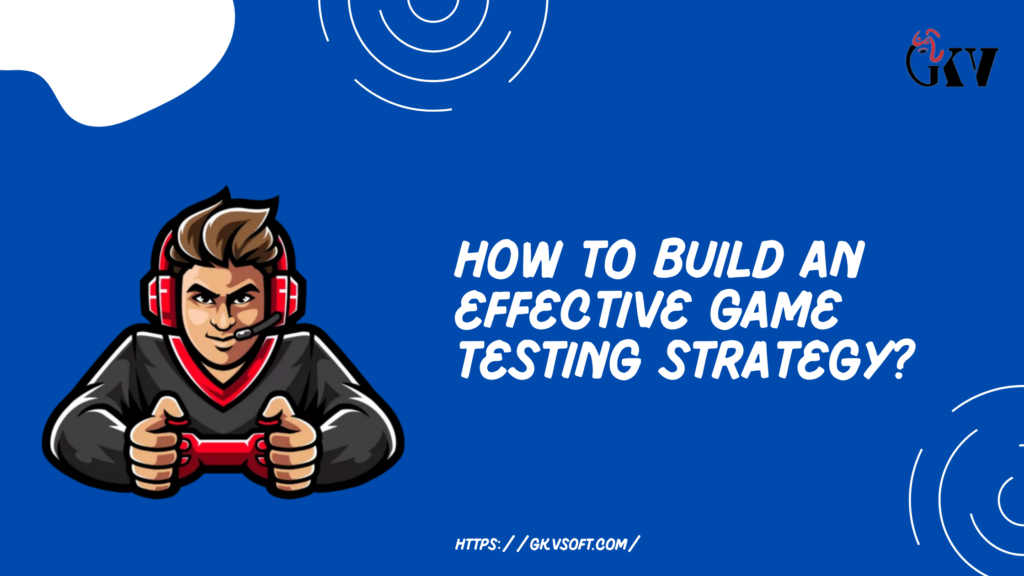With the ever-evolving and very dynamic nature of the game development industry, trouble-free and immersive playability is the priority. Extensive planning for the testing of the games is very crucial if a success in the business is ever desired, which not only makes the games work as expected but also renders them both engaging and enjoyable. From start to finish, this walkthrough sheds light on key subjects and concepts of creating an efficient game test plan.
Understanding the Importance of Game Testing
Game testing, or quality assurance (QA) testing, is a complete process that works to detect and fix defects, bugs, and inconsistencies in a game. Far beyond mere function checking, game testing includes performance testing, compatibility testing, and user experience study. A well-developed test plan will have the final product meet developers’ and players’ expectations, resulting in user satisfaction and brand protection.
Key Elements of a Successful Game Testing Strategy
Requirement Analysis and Planning
Complete Requirement Gathering: Start with the acquisition of a proper understanding of the game’s design documents, storyboards, character profiles, and level blueprints. This forms the foundation to establishing proper test cases and scenarios.
Setting Test Goals: Establish correctly what the testing process needs to accomplish, e.g., performance requirements, compatibility levels, and user experience objectives.
Resource Planning: Establish the resources required, such as test tools, hardware setup, and trained personnel, to effectively conduct the test plan.
Test Strategy Development
Choosing Testing Types: Choose and prioritize different types of testing such as functionality testing, performance testing, compatibility testing, and localization testing. Each of these tests validates different dimensions of the game quality.
Manual vs. Automated Testing: Use the best combination of manual and automated testing. Automated testing offers efficiency in duplicate test work, yet manual testing is essential in verifying complex game mechanics and player interactions.
Test Environment Setup: Establish varied test environments to mimic different hardware platforms, operating systems, and networks for providing good coverage.
Test Case Design and Development
Building Holistic Test Cases: Build test cases for all possible situations, negative testing, and edge testing to find hidden issues that may remain undetected through regular testing.
Prioritization: Prioritize test cases by how they relate to gameplay and the user experience so core features are tested first.
Applying Combinatorial Testing: Apply combinatorial testing techniques to run the input combinations successfully and thus detect defects that may exist due to specific interactions.
Executing Tests
Functional Testing: Test all functions of the game as per design requirements and note or report any deviation.
Performance Testing: Conduct responsiveness, stability, and resource usage tests under different conditions to ensure optimum performance.
Compatibility Testing: Ensure that the game runs smoothly on various devices, operating systems, and hardware configurations.
Localization Testing: Localize the game so it gets translated and culturally modified according to various locations in order to provide the same experience to all the players.
Bug Tracking and Reporting
Defect Management System Implementation: Have proper bug tracking tools implemented in order to record, classify, and prioritize detected bugs for easier fix.
Clear and Brief Reporting: Give exact descriptions, steps for reproduction, and physical evidence (e.g., screenshots or videos) of every defect so that developers can understand and rectify the flaws.
Regression Testing
Re-testing After Fixes: Perform regression testing after bug fixing to verify if the fix-up did not have any side effects or spoil the current functionality.
Automated Regression Suites: Enhance automated test suites for regression testing to be more robust and efficient in making sure that older functions are not compromised.
User Acceptance Testing (UAT)
Involving Real People in the Process: Use a sample group of users who will be playing the game as part of regular experience, entering appropriate input on fun, usability, and overall satisfaction.
Iterative Feedback Implementation: Sifting through customers’ feedback to know the areas of concern and implementing the necessary adjustments to improve playing quality.
Ongoing Monitoring and Post-Release Maintenance
Monitoring Post-Release Performance: Utilize analytical tools to monitor the game’s performance, user interactions, and post-release bugs.
Periodic Patches and Fixes: Repair known issues promptly using fixes and updates in order to sustain game quality and customer happiness over time.
Best Practices in Game Testing
Testing Early and Frequently: Embed test activity within development right from the early stages and continue with them through the duration of the complete development phase for catching and addressing problems at the initial level itself.
Team Coordination: Ensure open communication and coordination between testers, developers, designers, and other involved parties so that there must be a single, common quality assurance process.
Use of Automation: With automation optimizing testing, there are certain areas where manual testing cannot be replaced, e.g., validating user experience and complex game scenarios.
Complete Documentation: Have complete records of test cases, test procedures, and defect reports so that future reference and knowledge sharing become easy.
Adapting to Emerging Trends: Stay updated with the latest trends in game testing tools, methods, and industry best practices so that the testing strategy is updated and sharpened continuously.
Conclusion
Creating a proper game testing strategy is a challenging task that involves planning, execution, and repetition in a careful manner. With attention to detail in testing procedures, teamwork, and player focus, developers can create quality games that are entertaining and satisfying to their fans. A well-written testing plan not only guarantees the success of the game on its initial release but also ensures the long term and reputation of the gaming firm.

